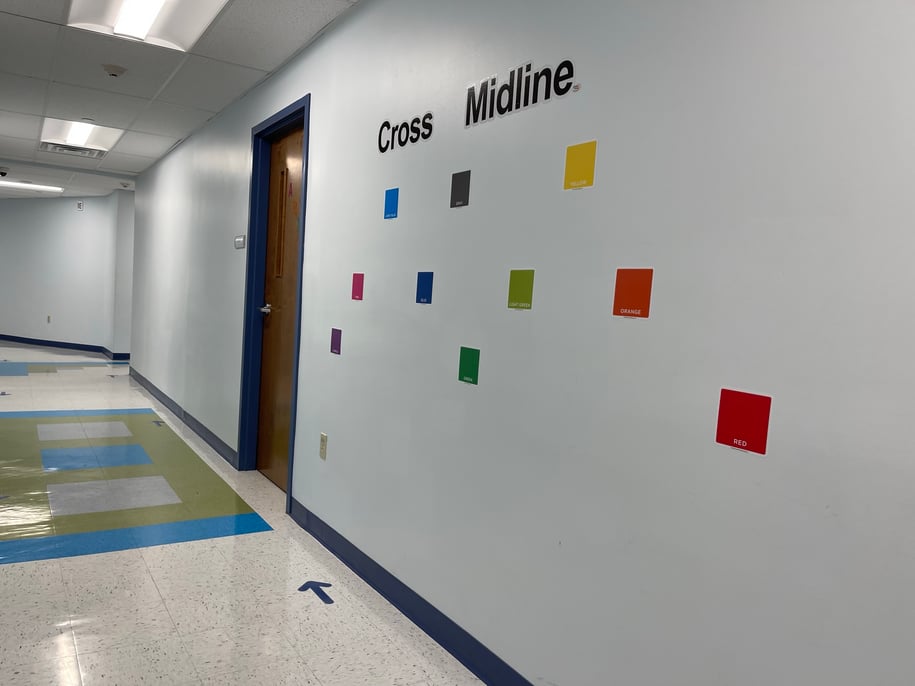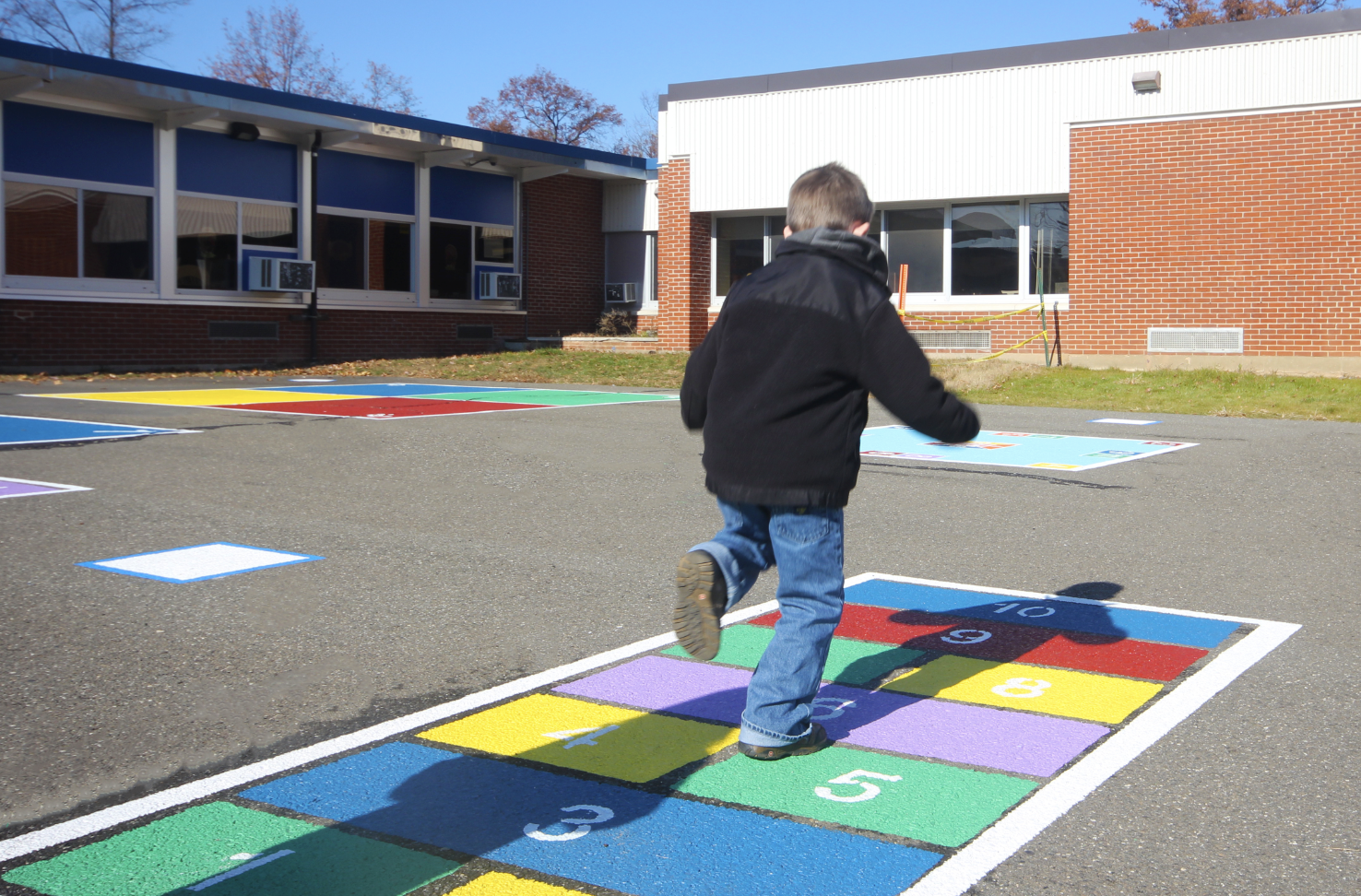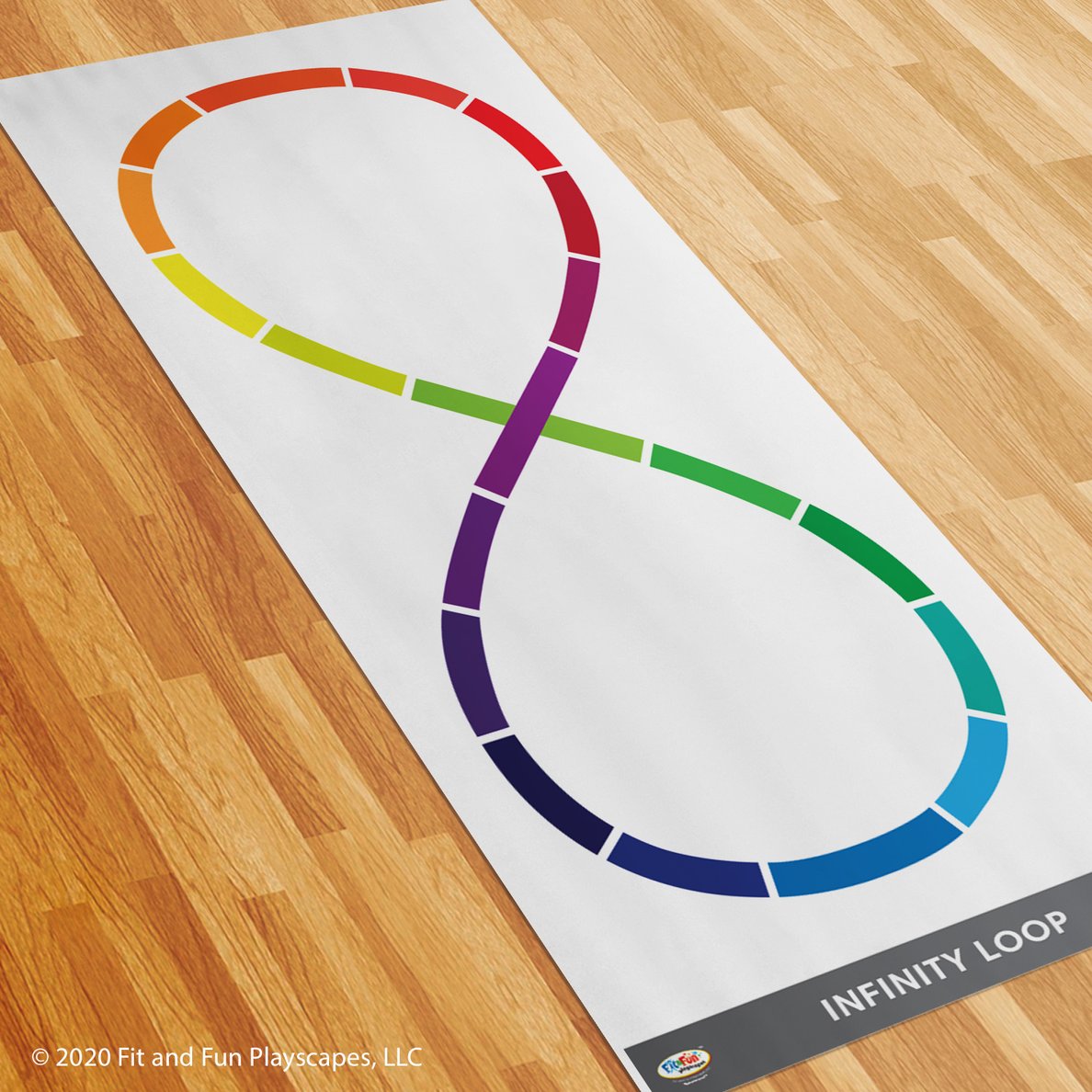Reading, Movement and Literacy: The Importance of Mid-Line Crossing on Child Development
Midline crossing refers to the ability to move your eyes or your body parts (arms and legs) from one side of your body to the other, crossing an imaginary midline that divides your body in two halves. Midline crossing is an essential skill that impacts growth and development. When we develop advanced motor skills such as throw, kick, strike, or body movements such as dynamic balance while reaching or stretching, we often cross midline. Every time we cross the midline the brain works harder to organize and control the sensory input we feel when midline crossing occurs. This is often the reason why your handwriting isn’t as good when reaching across your body or you struggle to maintain balance during a midline activity. It is also critical when reading which requires your eyes to move smoothly and efficiently along a line of text from left to right.
If your kids struggle with midline crossing it is often something that can be practiced and or worked on to help lessen the impact and improve overall integration of senses.
Here are some benefits of midline crossing along with activities to practice this very important motor ability.
ENHANCES PHYSICAL COORDINATION: Crossing the midline helps to improve the coordination of the left and right sides of the body, as well as the coordination between the eyes and hands. This can be helpful for activities that require fine motor skills, such as handwriting or playing a musical instrument and helpful for gross motor skills such as skipping, galloping, kicking, and throwing.
Activity (Sensory Pathway Hopscotch): Using the traditional hopscotch game (see www.fitandfunplayscapes.com for rules), toss the marker into a square and hop or jump. When the marker falls outside of the square, instead of losing a turn - continue on but you must reach across your body to pick the marker up while balancing on one foot!
IMPROVES PERCEPTUAL MOTOR (EYE) TRACKING: When your eyes move smoothly across the page, it's easier to keep your place and understand the text. Midline crossing helps to train the eyes to move efficiently across the page.
Activity (Flashlight Tag): Using a flashlight – have your kiddos lay on their back and slowly follow your light with their light. Move across and up and down. Make sure their head stays still (on a pillow) and ask them to follow your light with their eyes only. Add fun and put a colored piece of saran wrap over the lens with a rubber band!
INCREASES VISUAL TRACKING/SPEED: As your eyes become more adept at crossing the midline, you'll be able to move your eyes faster (while tracking a moving object) and with greater accuracy. Your eyes will not tire as quickly either and allow you to track or read longer paragraphs.
Activity (Circle Fun): Using a hula hoop and two tennis balls, sit across from your partner with the hula hoop between you. One person then rolls the tennis ball around the inside edge while the other has to track and stop it before it gets to their midline. Do two balls at the same time – opposite directions for added difficulty and practice.
IMPROVES SPACIAL AWARENESS: Crossing the midline can help to improve spatial awareness, which is the ability to understand and perceive the spatial relationships between objects and their environment. This can be helpful for activities such as sports, driving, or navigating a new environment.
Activity (Infinity Loop): Follow the pattern of an infinity loop for both galloping and skipping. Be sure to keep eyes on the pathway and increase speed if you are able to maintain balance! (www.fitandfunplayscapes.com)
ENHANCES COMPREHENSION/UNDERSTANDING: When your eyes move smoothly and efficiently, your brain can more easily process and understand the sensory information that your eyes are taking in. This allows your brain to make better sense of what you are seeing and or reading and in turn can help improve your overall comprehension and memory.
Activity (It Rocks): Using sticker spots (red, yellow, blue, green) on the wall and on the floor – move along the wall while crossing midline and attending visually to the spots while reaching for the next color. Add difficulty by calling out the color or only choosing 2 of the four colors.
FACILITATES COMMUNICATION BETWEEN BRAIN HEMISPHERES: Crossing the midline requires the communication of information between the left and right hemispheres of the brain. This can help to improve overall brain function and may have benefits for cognitive processes such as creativity and problem-solving.
Activity (Circle Fun): Using a hula hoop and two tennis balls, sit across from your partner with the hula hoop between you. One person then rolls the tennis ball around the inside edge while the other has to track and stop it before it gets to their midline. Do two balls at the same time – opposite directions for added difficulty and practice.
–––––––––––––––––––––––––––––––––––––––––––––––––––––––––––––––––––––––––––––––––––––––––––––––––––––
Let's see what Dr. Tim Davis has to say...
Midline crossing is also an important developmental milestone for children. As they learn and experience how to cross the midline, they are also strengthening the neural connections in their brain. The stronger and more dense these neural pathways become, the greater the ability of the brain to support other cognitive skills such as problem solving, social emotional skills and self-regulation!
Literature supports midline crossing as an important skill that has benefits for both physical and cognitive development. It can improve physical coordination, support cognitive development, improve spatial awareness, improve reading ability and facilitate stronger neural pathways that enhance sensory processing.






Leave a comment